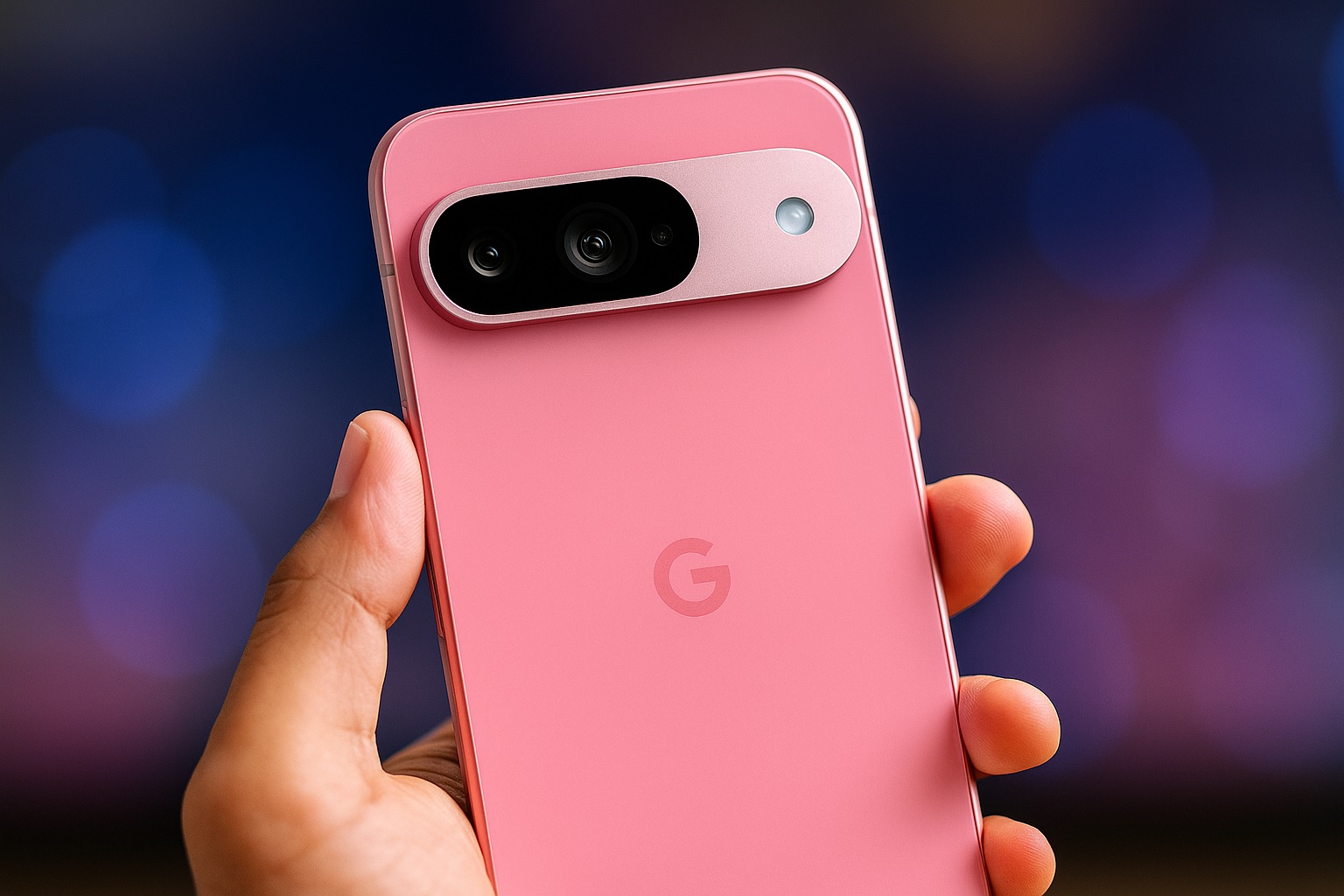- Unprecedented second October patch: Google unexpectedly released a second October 2025 software update for Pixel smartphones just days before the November patch, an unusual move as Pixels typically get one update per month [1]. This surprise update is rolling out to Pixel 7, 8, 9, and 10 series devices, leaving the Pixel 6 series excluded once again [2].
- Small download, big fixes: The update is tiny (~30 MB) on Pixel 10 phones and carries no new features or user-facing changes, focusing instead on behind-the-scenes improvements [3]. Google hasn’t published detailed release notes, but Verizon’s changelog confirms the update “provides performance improvements” for the device [4]. Notably, on Pixel 10 devices the build number has incremented from W3 to W4, and the security patch level jumps from September to October 2025 with this update [5].
- Pixel 6 still waiting: Owners of the Pixel 6, 6 Pro, and 6a are left out of both October patches, as Google has yet to issue any October 2025 update for the Pixel 6 family [6] [7]. Likewise, the Pixel Tablet did not receive this late-October update, indicating Google limited the release to recent phone models [8].
- Likely a critical fix: Google hasn’t explained the sudden second update, but experts suspect it was rushed out to fix a serious bug or security vulnerability that couldn’t wait [9] [10]. “They haven’t said what these builds are for… there must be something serious enough going on here for Google to send a new build this late in a month,” one commentator observed [11]. It’s speculated that Google chose to address an urgent issue now rather than bundling the fix into the upcoming November release [12].
- Beta testers get a patch too: Alongside the stable update, Google also rolled out Android 16 QPR2 Beta 3.2 for Pixel devices enrolled in its beta program. This beta hotfix (~40–50 MB) delivers additional bug fixes and stability improvements [13]. For example, it fixes an Android 16 lock screen clock glitch and other issues from the previous beta [14]. Google says the beta patch “enhances device stability” [15], and it remains based on the October 2025 security level [16].
Google Drops an Extra October Update for Pixels
Google stunned Pixel owners by releasing an extra software update in late October 2025, well outside the normal monthly schedule. Typically, Pixel phones receive their Android security patch and bug fixes in the first week of each month. In fact, the regular October 2025 update had already rolled out earlier in the month, bringing fixes for issues like screen flickering on the Pixel 7 and a fuzzy/freezing display on the Pixel 10 [17]. That made it especially surprising when a second Pixel update suddenly arrived on October 30, just ahead of November’s expected patch.
This surprise October patch is available for all newer Pixel models – from the Pixel 7 up through the latest Pixel 10 series [18]. The rollout covers the Pixel 7/7 Pro (and 7a), Pixel 8/8 Pro (and 8a), Pixel 9 series, and the newly launched Pixel 10 lineup. Importantly, Google’s older Pixel 6 series is not included, which mirrors the Pixel 6’s absence from the earlier October update as well [19]. In other words, Pixel 6, 6 Pro, and 6a users are still stuck on the September patch for now [20]. Google hasn’t commented on why the Pixel 6 family keeps missing the October updates, leaving those users waiting possibly until the November release for any new fixes.
Also missing from this late-October round is the Pixel Tablet. Google appears to have skipped the tablet in this out-of-band update [21], likely because the urgent fixes were only needed for phones. The original Pixel Watch (Wear OS) did receive its own October update earlier, but that’s separate from this smartphone patch.
No New Features – Just “Performance Improvements”
Users hoping for new features or visible changes will not find any in this mid-cycle update. Multiple sources confirm that the late-October Pixel update doesn’t introduce new features or UI tweaks [22]. Instead, it’s a small patch (around 20–30 MB for most devices) that delivers under-the-hood fixes. Google did not issue a detailed changelog for this release, which is unusual – the update was quietly posted without the usual fanfare or explanation on Google’s update bulletin.
However, clues from carrier partners shed some light. Verizon’s official update note explicitly states that the new software “provides performance improvements” for Pixel devices [23]. In other words, the patch is aimed at improving stability, speed, or battery life by resolving some known problems, rather than adding functionality. The build numbers on Pixels have bumped up slightly – for example, Pixel 10’s firmware jumped from version BD3A.251005.003.W3 to .W4 with this update [24] – indicating a minor revision. On Pixel 7, 8, and 9 series phones, the build number similarly increments by a small amount (e.g. from .B1 to .B2 or .B3 on different models [25]). These incremental build changes align with a maintenance-style update focused on fixes.
One notable effect of the update is on the Pixel 10 series’ security patch level. Pixel 10 and its variants launched with the September 2025 security patch; this update brings them up to the October 2025 security patch level [26]. That means Pixel 10 owners are now on the latest security level, matching other Pixels that got the October patch earlier in the month. For other eligible models, it’s likely the security level remains October 2025 (which they already had from the initial October update).
Google’s silence on the specifics has left users guessing what exactly was fixed or improved. No official Pixel community post or changelog was released alongside this patch [27]. Anecdotally, some Pixel 10 users on Verizon who received the ~27 MB download reported no obvious changes, just that their device firmware updated to the new version. The lack of visible changes reinforces that this was purely a backend fix. Those who are eager to get the update can check manually via Settings > System > System update, as always, or sideload the OTA image – though Google indicates it should reach devices quickly now that it’s rolling out [28].
Pixel 6 Owners Left Out (Again)
While Pixel 7 and newer phones are benefitting from whatever fixes are in this patch, the Pixel 6 series remains in limbo. Google did not include Pixel 6, Pixel 6 Pro or 6a in either the regular October update or this follow-up patch, leaving that entire generation on the previous month’s firmware [29] [30]. This is the second time in a row the Pixel 6 lineup has been skipped in an update cycle, which is causing some frustration and confusion among owners.
It’s unclear why Google omitted the Pixel 6 family. All three devices are still within Google’s support window (they launched in late 2021, and Pixel models generally get 3 years of OS updates and at least 5 years of security patches). In the past, Google has delayed or withheld specific Pixel model updates if last-minute bugs are discovered. For example, if a patch is found to cause problems on Pixel 6 hardware or modems, Google might hold it back until resolved. The Pixel 6 series has a different chipset (Google Tensor G1) than newer models, which sometimes leads to unique bugs that need extra time. Indeed, some community speculation suggests a technical issue may have prevented the Pixel 6’s October patch from being released, though Google hasn’t confirmed this.
The hope for Pixel 6 owners is that November’s update (expected in the first week of November 2025) will finally bring them up to date. If a critical fix was needed, Google may be bundling the Pixel 6 resolution into the next monthly patch. For now, Pixel 6 users have to wait a bit longer while Pixel 7-10 devices move ahead with these improvements.
Why Did Google Push an Out-of-Band Update?
This late-October Pixel update is unusual – it arrived only a week or so before the scheduled November update. That raises the question: what was so urgent that Google couldn’t wait? While Google hasn’t made any public statement about the reasoning, experts widely suspect it was to fix a critical bug or security vulnerability that emerged. Releasing an extra update just days before the next one is due implies some severity.
Seasoned Pixel watchers note that Google typically only does mid-cycle patches for pressing issues. As Droid Life’s editor put it, “they haven’t said what these builds are for… so we’ll assume they are to address a serious bug or two… there must be something serious enough going on here for Google to send a new build this late in a month” [31]. In other words, Google likely discovered a problem in recent weeks that warranted an immediate fix rather than waiting for November’s patch.
One plausible scenario is a security flaw was identified – possibly one being exploited in the wild – which Google wanted to patch on Pixels as quickly as possible. Android Central observes that it’s very possible Google found a “major security issue” that made them push out a small emergency update early [32]. Had it been a minor bug, the fix could have waited. But a serious security vulnerability (or a bug causing crashes for many users) would justify an out-of-band update to protect users.
It’s worth noting that the November 2025 Pixel update was expected to be a feature drop with some new goodies (more on that below). If Google indeed split off an urgent fix into this October patch, it might have done so to ensure users weren’t left exposed for an extra week or two. By shipping a quick fix now, Google can include all the fun new features in November without also having to rush out a critical repair at the same time.
So far, there’s no direct evidence of what specific bug or exploit was addressed. No glaring issue was widely reported by Pixel 7–10 users just prior to this. It might have been a behind-the-scenes vulnerability reported privately to Google. We may learn in hindsight (through a security bulletin or update notes) what was quietly resolved. Google did update the Pixel 10’s security patch level to October with this update [33], which hints at a security-related motive. Until Google provides details – if ever – the exact reason remains educated speculation. But the consensus is clear: something important prompted Google to act outside their usual schedule.
Android 16 Beta Also Sees a Stability Patch
Parallel to the stable release fixes, Google also addressed issues in the Android 16 beta program for Pixel phones. On the same day, the company rolled out Android 16 QPR2 Beta 3.2 to Pixel devices enrolled in the Android Beta Program [34]. This is a minor update on the beta channel, but it carries several bug fixes and stability improvements for testers who are running the pre-release Android 16 Quarterly Platform Release (QPR2).
According to Google’s official post in the beta subreddit, this Beta 3.2 patch “enhances device stability” and mainly fixes bugs introduced in the previous beta [35]. Notably, a lock screen clock bug that was affecting some users in Beta 3.1 has been fixed in Beta 3.2, as reported by those who installed the update [36]. Additionally, Pixel users noted that the At a Glance widget’s weather info, which had been broken, is now working properly after the patch [37]. These small fixes improve the experience for brave Pixel owners testing Android 16 ahead of its wider release.
The Beta 3.2 update is around 40–50 MB (depending on device) and still uses the October 2025 security patch base [38]. It’s available for all Pixels from the Pixel 6 onward (as those are eligible for Android 16 beta) as well as the Pixel Tablet [39]. This means ironically Pixel 6 does get the beta fixes, despite not getting the stable October patch. Any Pixel user already enrolled in the beta program should see the OTA update, and Google has also made the beta OTA images available for manual download/flash [40].
The quick succession of Beta 3.1 (released last week) and Beta 3.2 (this week) suggests Google is rapidly ironing out issues in the QPR2 build. In fact, Beta 3.1 itself was an urgent hotfix for a SystemUI crash in the prior beta [41]. With Beta 3.2, Google continues to refine stability. All of this is a positive sign that by the time Android 16 QPR2 launches to the public (likely in December), it will be more polished.
What’s Next: November Update and Feature Drop
Pixel users now find themselves on an unusual footing entering November 2025. With this last-minute October patch installed, their phones are up-to-date on fixes and security – but many are looking ahead to the November Pixel update, which is expected within the first week of November. That update should bring not just the usual security patch but also some new features and enhancements that have been in development.
According to reports, the November 2025 Pixel update (which may be part of the quarterly Feature Drop) is anticipated to include “theme packs” for deeper Material You customization, a new GIF-creation tool in the Pixel Studio app, and other additions [42]. These features were teased in leaks and are likely ready to ship. If Google indeed pulled a critical fix out of the November build to release it early (as the late-October patch), then the November rollout might focus more on those new features and standard fixes.
Pixel 6 owners, in particular, will be hoping that November’s update not only delivers the fresh features but also finally updates their phones with the October fixes they missed. By then, any remaining Pixel 6 issues should be resolved or merged into the new patch – otherwise Google would face a third consecutive skip, which is unlikely barring a major technical roadblock.
It’s also worth mentioning that Google is working on other updates for the newest devices. For instance, a GPU driver update for the Pixel 10 series has been hinted at, aimed at improving graphics performance or power efficiency [43]. It’s unclear if that will land as part of the November update or separately. Google has also just delivered Wear OS 6 to the Pixel Watch 3 and 2, and even made a controversial change by making the Google Clock app exclusive to Pixel Watches (removing it from other Wear OS devices) [44]. In short, a lot is happening across the Pixel ecosystem as Google closes out October.
For now, the key takeaway is that Pixel users should install the new October 2025 patch when it hits their device, as it likely patches important issues. There may not be any flashy features in it, but under the hood your Pixel will be more stable and secure – which is always a good thing. And with the big November update just around the corner, this surprise patch ensures that Pixels are in good shape to receive the next wave of features without lingering bugs getting in the way.
Sources: Google (Verizon update notes) [45] [46]; Android Authority [47]; Android Police (Droid Life) [48]; Android Central [49] [50]; PiunikaWeb [51] [52]; Android Central (Beta details) [53].
References
1. www.androidcentral.com, 2. www.androidauthority.com, 3. www.androidcentral.com, 4. piunikaweb.com, 5. piunikaweb.com, 6. www.androidauthority.com, 7. www.droid-life.com, 8. www.androidcentral.com, 9. www.droid-life.com, 10. www.androidcentral.com, 11. www.droid-life.com, 12. www.androidcentral.com, 13. www.androidcentral.com, 14. www.androidcentral.com, 15. piunikaweb.com, 16. piunikaweb.com, 17. www.androidauthority.com, 18. www.androidauthority.com, 19. www.androidauthority.com, 20. www.droid-life.com, 21. www.androidcentral.com, 22. www.androidcentral.com, 23. piunikaweb.com, 24. piunikaweb.com, 25. www.droid-life.com, 26. piunikaweb.com, 27. piunikaweb.com, 28. www.androidauthority.com, 29. www.androidauthority.com, 30. www.droid-life.com, 31. www.droid-life.com, 32. www.androidcentral.com, 33. piunikaweb.com, 34. piunikaweb.com, 35. piunikaweb.com, 36. www.androidcentral.com, 37. www.androidcentral.com, 38. www.androidcentral.com, 39. www.androidcentral.com, 40. piunikaweb.com, 41. piunikaweb.com, 42. www.androidcentral.com, 43. www.androidcentral.com, 44. piunikaweb.com, 45. piunikaweb.com, 46. www.verizon.com, 47. www.androidauthority.com, 48. www.droid-life.com, 49. www.androidcentral.com, 50. www.androidcentral.com, 51. piunikaweb.com, 52. piunikaweb.com, 53. www.androidcentral.com




